The Story of the Aymara People
Reading time: 9 min
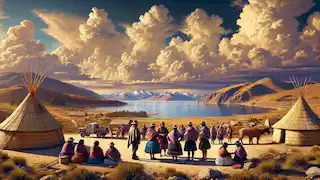
About this story: The Story of the Aymara People is a Historical Fiction from Bolivia set in the Ancient This Descriptive tale explores themes of Perseverance and is suitable for All Ages. It offers Historical insights. An enduring legacy of resilience and heritage in the heart of the Andes.
The Aymara people, a community rich in tradition and resilience, are indigenous to the highlands of the Andes, primarily in regions that now form Bolivia, Peru, and northern Chile. With a history that stretches back thousands of years, the Aymara have maintained a distinct cultural identity, language, and way of life despite centuries of challenges. They have survived colonial rule, adapted to environmental hardships, and cultivated a spiritual and philosophical worldview deeply connected to nature. This story delves into the journey of the Aymara people, exploring their ancient roots, cultural heritage, and the social and political landscapes that shaped their path. Through the struggles and achievements of this remarkable community, we witness a narrative of endurance, adaptation, and cultural pride.
Origins and Ancestry
The history of the Aymara people is intricately linked to the Andes, where they are believed to have settled more than two thousand years ago. The exact origins remain a matter of debate among historians, but archaeological evidence suggests that the Aymara were part of or closely related to the ancient Tiwanaku civilization, which flourished near Lake Titicaca around 200 BC to 1000 AD. The Tiwanaku people were known for their sophisticated agricultural techniques, intricate pottery, and stone architecture that still stands today as a testament to their ingenuity.
The Aymara, as descendants of this powerful civilization, inherited a wealth of knowledge about high-altitude farming, animal husbandry, and water management. They built terraced fields, or "andénes," that allowed them to maximize crop yields in the harsh mountainous terrain, and developed an intricate canal system to irrigate their crops. The landscape became a part of their identity, embodying not only their means of survival but also their spiritual beliefs.
As the Tiwanaku civilization declined, various Aymara kingdoms began to emerge, establishing their own cultural practices and political systems. Known for their self-governing communities, or "ayllus," the Aymara created a decentralized social structure that prioritized collective welfare and cooperation. These communities were bound by kinship and a profound sense of respect for Pachamama, the earth goddess, who was believed to provide sustenance and balance to their lives. In this early period, the Aymara language flourished, forming the foundation for what would become one of the oldest surviving indigenous languages in South America.
The Inca Conquest
The rise of the Inca Empire in the 15th century marked a significant chapter in Aymara history. The Inca, originating from Cusco in modern-day Peru, began expanding their territory across the Andes, bringing the Aymara-speaking regions under their rule. The conquest was not without resistance; the Aymara kingdoms fought fiercely to defend their lands and culture, but the Inca's advanced military strategies and organization ultimately led to their dominance over the region.
Once incorporated into the Inca Empire, the Aymara people experienced changes in their governance and religious practices. The Inca imposed their administrative structure, integrating the ayllus into the broader imperial system while respecting some elements of local governance. However, the religious practices of the Aymara were altered to include reverence for Inti, the sun god, central to Inca spirituality. This fusion created a unique blend of Aymara and Inca religious beliefs that still resonates in Aymara spirituality today.
Despite the Inca influence, the Aymara retained a strong cultural identity. The Aymara language, though influenced by Quechua (the language of the Inca), continued to be spoken widely. Traditional Aymara customs, such as agricultural festivals and ceremonies honoring Pachamama, remained integral to their society. The Inca period brought about a period of relative peace and prosperity, with the Aymara benefiting from trade routes established across the Andes, allowing them to exchange goods and ideas with other regions in the empire.
Spanish Conquest and Colonial Rule
The arrival of the Spanish in the 16th century introduced a period of intense upheaval for the Aymara people. The Spanish conquistadors, led by Francisco Pizarro, dismantled the Inca Empire with startling speed, bringing disease, violence, and forced labor to the indigenous populations of the Andes. The Aymara, along with other indigenous groups, were subjected to the encomienda system, which effectively enslaved them, forcing them to work in Spanish-owned mines and plantations.
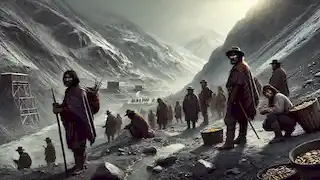
The discovery of vast silver reserves in Potosí (present-day Bolivia) became both a curse and a defining aspect of colonial rule in the region. Aymara men were often forced to work in these mines under brutal conditions. This labor system, known as the "mita," required indigenous men to spend months at a time in the dangerous and toxic environments of the mines, with little to no compensation. The exploitation and suffering of the Aymara and other indigenous groups in these mines fueled the wealth of the Spanish Empire but left a lasting scar on the Aymara community.
Colonial policies also sought to erode the cultural identity of the Aymara, with Spanish authorities attempting to suppress indigenous languages, customs, and religions. Catholicism was aggressively imposed, and many Aymara were baptized into the new faith. However, the Aymara found ways to incorporate their traditional beliefs into Catholic practices, blending the two in a syncretic faith that endures to this day.
Independence and the Struggle for Rights
By the 19th century, the political landscape of South America began to shift as independence movements swept through the continent. Bolivia and Peru, both heavily populated by Aymara communities, gained independence from Spain in the early 1800s. However, the change in political control did not immediately improve conditions for the Aymara, as the new governments largely continued the policies of oppression and exploitation that had existed under colonial rule.
The 20th century marked a new chapter in the Aymara struggle for rights and recognition. Land reforms in the mid-20th century sought to redistribute land to indigenous communities, though the process was often slow and fraught with corruption. The Aymara began organizing politically, demanding recognition of their land rights, cultural identity, and language. Aymara leaders emerged, advocating for the preservation of their heritage and pushing for social justice. The Federation of Bolivian Workers, with a strong indigenous base, became a platform through which the Aymara and other indigenous groups voiced their demands for equality and justice.
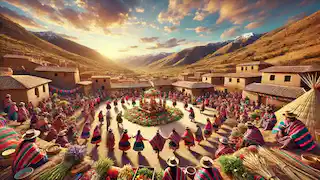
One of the most significant milestones in this movement came in 2005, when Evo Morales, an Aymara coca farmer and trade union leader, was elected as the president of Bolivia. Morales's presidency was historic; he became the first indigenous leader of the country, symbolizing a shift in Bolivian society and politics. Under his leadership, Bolivia reformed its constitution to recognize the rights of indigenous peoples, elevating the status of indigenous languages and affirming the right of the Aymara and other groups to maintain their cultural practices.
Culture and Heritage
Today, Aymara culture remains vibrant, with traditions that date back centuries still practiced in daily life. The Aymara have a rich oral tradition, passing down stories and wisdom from one generation to the next. Storytelling is a fundamental aspect of their culture, with tales of ancient heroes, deities, and lessons about nature and morality. Music and dance play a significant role in Aymara festivities, often performed during religious and agricultural festivals. The "Diablada," or Devil's Dance, is a well-known folk dance that combines indigenous and Catholic elements, symbolizing the battle between good and evil.
Aymara clothing is another significant cultural marker, with traditional garments such as the "pollera" (a layered skirt) for women and the "poncho" for men. These clothes are often adorned with intricate patterns and colors that hold symbolic meaning. The Aymara are also known for their exquisite handicrafts, including textiles, pottery, and jewelry. These crafts are more than mere objects; they are embodiments of Aymara cosmology and worldview, with motifs representing natural elements like mountains, rivers, and animals.
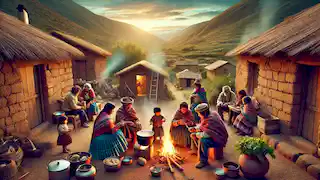
Language continues to be a cornerstone of Aymara identity. Despite centuries of marginalization, the Aymara language has survived and is now recognized as an official language in Bolivia and Peru. Efforts to revitalize the language, particularly among the youth, are ongoing, with educational programs and media aimed at preserving Aymara for future generations.
The Modern Aymara Identity
In the 21st century, the Aymara people face the challenges of modernity, globalization, and climate change. The melting of glaciers in the Andes, a critical source of water for Aymara communities, has put their traditional farming practices at risk. Nonetheless, the Aymara continue to adapt, finding innovative ways to sustain their agricultural practices and protect their environment.
Migration has also impacted the Aymara community, with many moving to urban areas in search of better economic opportunities. However, this migration has led to a unique blending of rural and urban Aymara identities. In cities like La Paz and El Alto, Aymara traditions and festivals have become an integral part of urban culture, showcasing the resilience of Aymara heritage.
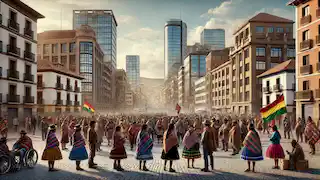
Education and political activism remain central to the Aymara's ongoing journey. Young Aymara activists and scholars are working to reclaim and celebrate their heritage while advocating for social and environmental justice. The Aymara philosophy, known as "Suma Qamaña" or "Good Living," emphasizes harmony with nature and community, offering a worldview that resonates with global movements toward sustainable and holistic living.
Conclusion
The story of the Aymara people is one of resilience
, adaptability, and pride. Over thousands of years, they have weathered numerous challenges, from colonial conquest to modern-day environmental threats, all while preserving a rich cultural identity that is deeply rooted in the Andean landscape. Their legacy is a testament to the power of community, the endurance of tradition, and the strength of an unbroken connection to the land.
In a world that often prioritizes economic progress over cultural heritage, the Aymara offer a reminder of the value of balance and respect for nature. As they continue to navigate the complexities of the modern world, the Aymara people stand as guardians of an ancient heritage, carrying forward the wisdom of their ancestors and the hope for a future that honors both tradition and progress.


















